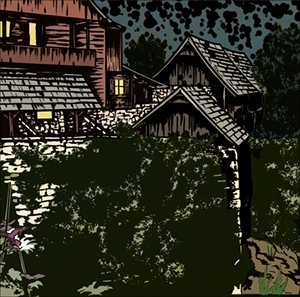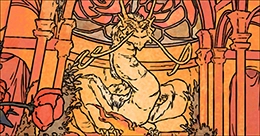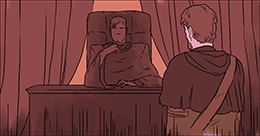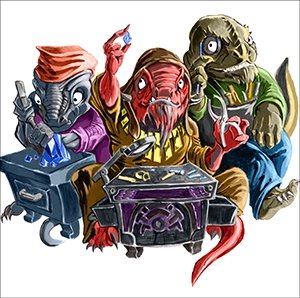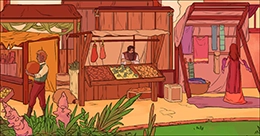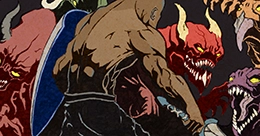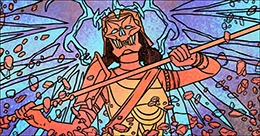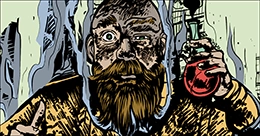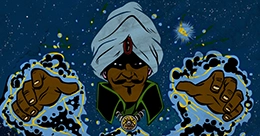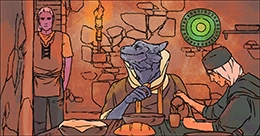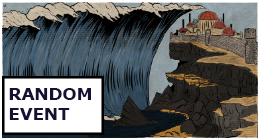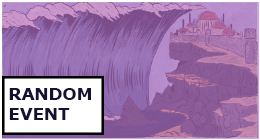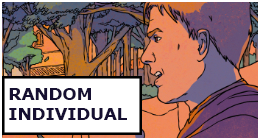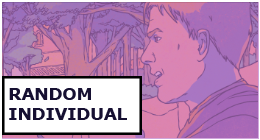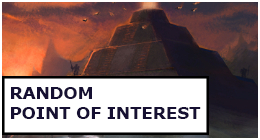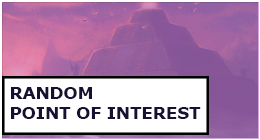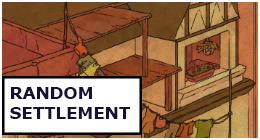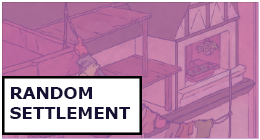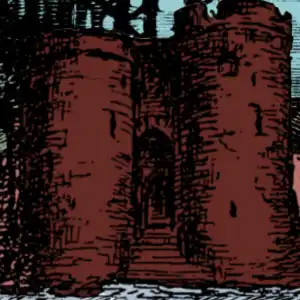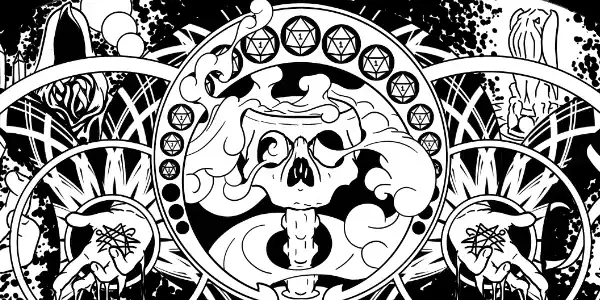Dragons
Dragon: the very word evokes a sense of awe. These glorious creatures have shaped RPGs since the beginning. Their very presence infused into the foundations of the genre. Dromaria is no different.
From the mighty Primals, whose breath and blood shape the elements, to their children that roam the skies, forests, and oceans, dragons are not merely monsters; they are the pillars upon which history rests. Dragon lore stretches back to an age before the arrival of mortals, when dragons were uncontested. This was a time of unbridled freedom for their kind, their desires only limited by their imagination.
But the world was forever altered with the arrival of outsiders. It was a time of tumult and conflict. The eventual understanding came at great cost. The establishment of the Covenant marked a new world where dragons and mortals found a way to coexist, their fates sealed by a pact of divine rule.
In this section, we will explore the history of these legendary beings, their characteristics, the hierarchy within their kind, and the laws that govern their existence. We will unveil the truths about dragon’s elemental connections, the mysteries of their birth and death, their long lives filled with magic, and the territories they hold sacred. As we delve into the world of dragons, one must prepare to encounter the magnificence and terror of these ancient creatures, for to know dragons is to know the heart and soul of Dromaria itself.
Before Mortals
In the beginning, Primal dragons were the world's first sovereigns of creation, born directly from the source of magic: essence. This arcane force was the cradle of creation, the core from which dragonkind sprang. These colossal beings of elemental power, shaped the world to their vision, their command absolute. As the sole inhabitants, these Primals reigned supreme, flourishing without challenge. They tapped into the the world itself, bending it to their will. Over time the Primals began to change, connecting directly to the elemental pathways that flowed through Dromaria. In doing so, they became channels of the planes themselves, and new forms began to spawn around them. The emergence of metallic and chromatic dragons marked an evolution. These newer dragons, though not elemental sovereigns like their predecessors, still bore a connection to the world’s essence, altering their abilities and appearance. These new dragons began to establish dominion over the surface and the skies, roaming a world all their own.
The love of a dragon mother.
New Arrivals
The era of uncontested dominion ended abruptly with the arrival of the Ancestors. These alien intruders, wielding strange powers, ignited a devastating war. It was a conflict that saw great losses on both sides, including Rodgort, a Primal of fire. Clashes between dragonkind and the newcomers were inevitable, as the mortals sought to claim their place in the new world. The skies burned with fire, and the lands were torn asunder in calamitous conflicts. Yet, it was not to be an age of endless strife. In time, wisdom prevailed over wrath. The greatest of the dragons and the leaders of the mortals, including the sages Matunas and Dromadaes, forged a pact that would define history. The Covenant was more than a truce; it was a promise, a mutual respect that allowed everyone to thrive. The dragons agreed to share all but Erimata, while mortals pledged to honor the natural order.The Covenant
The Covenant is the basis of draconic law and the main aspect that keeps peaceful coexistence between dragons and mortals. It is not merely an agreement but a sacred bond that has held for millennia. It defines the balance of power, the sharing of knowledge, and the mutual protection of the world they now both called home. The dragons, bound by this pact, abide by its terms with a near-religious reverence, ensuring that the world of Dromaria remains a place where both dragons and mortals can aspire to greatness. For a full breakdown of the rules of the Covenant, see Chapter Three: Religions.
The Sovereign Sage
The Sovereign Sage is a pivotal position created to uphold the Covenant. Endorsed by the gods Matunas and Dromadaes, the role entails maintaining balance and ensuring adherence to the Covenant's terms. Living within the Sovereign Spire, a powerful source of magic and knowledge, the Sage bears significant responsibility and authority.
Throughout history, six individuals have served as the Sovereign Sage. The most notable and longest tenured was Harvie Ambrosius, the 'Deadeyes', a wizard known for his stern enforcement. Following the Prophet Stroud's assault on Emperor's Peak, Harvie was succeeded by Malik Kincaid, a cleric of Dromadaes and a member of the Band of the Last Days. Malik's ascension marks a new chapter for the role, with his effectiveness yet to be determined.
Dragonkind
It is difficult to summarize the entirety of dragons, as their physicality, personality, and purpose vary greatly across the whole of their kind. Dragonkind is a broad term covering a variety of different creatures. However those with dragon blood flowing through their bodies bear power beyond that of other creatures, drawing on the elements of Dromaria. Primal DragonsPrimal Dragons are elemental titans, the bedrock of dragonkind in Dromaria. These beings, born from the essence of fire, lightning, and other primal forces, wield the power to reshape landscapes and command the elements. Their presence alone can cause natural phenomena like earthquakes and climate shifts. Physically, Primals are colossal, often snake-like, blending scales with their elemental nature. Lacking wings, they possess mutable forms that allow them to merge with their environments, be it deep underground or atop the highest mountains. Their lairs, sacred and powerful, have historically shaped the geography and nations of Dromaria. The origins of Primal Dragons are tied to Dromaria's ley points, where they first awakened. They brought order to the world's rampaging elements, but their birth rate dwindled following the planting of the World Trees. Now, an estimated 50 or so remain, each a master of their own secret domains. In terms of abilities, Primal Dragons surpass all in their elemental control and magical prowess. Their breath weapons embody pure elemental strength, far more potent than those of other dragons. Nearly invulnerable within their lairs, they can alter conditions to extreme levels, rendering these spaces inaccessible. Primals have little interest in material possessions, instead valuing abstract concepts. They view mortals with a mixture of curiosity and detachment, often likened to intriguing pets or children. Not bound by the Covenant, they are nonetheless protected under its terms. The greatest crime among dragonkind is the harming of a Primal. Among the known Primals are Nat’sunseer in Liyish and Drosstemprus in Cadmus. Nat’sunseer, the eldest known Primal, oversees education and dragon affairs in Liyish. Drosstemprus, residing in the Firepeaks volcano Eminence, is a figure of solitude, its presence shaping the land with heat and ash. Primals are the ancestors of all dragonkind, the first and rarest of the modern dragons being the golds and silvers, while the other colors seemed to arrive at random, often shaped by their Primals' planar connections. In recorded history a dragonborn has never been hatched from a Primal’s lair. Dragons
The Primals and the elements birthed many types of beings into existence throughout history, with the most intelligent and imposing becoming known as dragons. Dragons share many of the same attributes and abilities as the Primals, shaping essence into spells, mastering their chosen elements, breath weapon, and fear aura. Unlike the Primals, most chromatic and metallic dragons are born with wings granting them mastery of the skies as well. The largest dragons at their peak still do not approach the size of a primal dragon. How dragons evolve as they age is dictated by their environment and community. Every dragon is connected to an element, with air, earth, fire, and water being the most common. However a dragon is not beholden to the same relationship as their parent. While it is more likely a dragon will find their elemental affinity linked to their bloodline, many take on characteristics far different from how they were raised. Dragons are regularly divided into two major categories, Chromatic and Metallic. Chromatic dragons bear leathered scales, colored by the elements they are connected to, typically in shades of black, blue, green, red, and white. Metallic dragons have more hardened scales, with colors reflective of precious metals, brass, bronze, copper, gold, and silver. Many believe essence and elements connect with Dromaria’s raw natural resources and minerals to form the eggs of the metallic dragons. This unique connection to Dromaria has many mortals convinced that the metallic dragons are the most powerful of their kin. However, on more than one occasion a metallic has met its match at the talons of a chromatic dragon. In the hierarchy of lawful dragonkind, all dragons are equal and in the lawless dragon's minds, it is survival of the fittest, color never truly being a factor in conflict among peers. Dragons in Dromaria do not adhere to preset alignments based on their color or type. Each dragon is an individual, with its own unique disposition, and many tend to a neutral stance. This is especially true for dragons aligned with the Covenant who might exhibit a range of behaviors, from detached observation to active benevolence, but seldom fall into outright malevolence. Dragonborn
In a life as long as a dragon the emergence of dragonborn from clutches is a relatively recent phenomenon, coinciding with the planting of the World Trees and the resultant elemental shifts. Initially, dragon kind met their unwanted children with disdain and fear, perceiving them as a curse inflicted by mortals. Many were destroyed by lawless dragons in remote regions, regarded as aberrations. Over time, however, dragonborn have carved out a respected place in dragon society. Their steadfast loyalty and dedication have gradually won the acceptance and esteem of their parents. In their roles, many dragonborn are tasked with overseeing mortal affairs, relieving dragons of these duties. In contemporary Dromaria, it's not uncommon to find dragonborn integrated into dragon domains, especially among the more civilized dragons, where they are cherished and valued as equal family members.
Habitats
In Dromaria, dragons residing in populated areas typically form Domains, small familial units of three to five dragons. This social structure is most prevalent in Erimata. While the dragons do not typically live in the same lair, they commonly spread across a region, changing the land to their will. The presence of a dragon's lair has a profound impact on its surroundings, either enriching or altering the environment to reflect the dragon's intent and personality. Natural settings such as mountains, forests, and lakes are favored for their ability to accommodate and evolve with the dragons' growth. A significant number of dragons choose to live near sources of elemental power, often in proximity to Primal Dragons. These locations, rich in elemental energy, provide dragons with enhanced strength. However, many such sites remain hidden, shrouded in secrecy even from other dragons. In their interactions with mortal societies, dragons frequently use their elemental abilities for the betterment of the land, leading to voluntary tributes from local populations. Some dragons opt to reside within or close to urban centers, assuming roles in governance, defense, or as regular inhabitants. Shapeshifting abilities are commonly employed in these scenarios, allowing dragons to seamlessly integrate into mortal societies.Magic & Essence
All dragons in Dromaria inherently possess magical abilities, which they manifest instinctively rather than through study. This natural affinity allows them to manipulate essence, shaping it into various magical effects. In their homes dragons are capable of drawing exceptional energy, connecting to the elements within. Even outside their lairs, they do not require material components, as their connection with essence fulfills all such needs. The potency and versatility of a dragon's magic increase with age and discipline in the arcane arts.Different Forms
Dragons possess the ability to shapeshift, a skill typically mastered as they reach adulthood. This transformation isn't just a visual disguise but a physical alteration of their form. Utilizing essence, dragons can change size, shape, and features. Civil dragons often use this ability to blend in and provide comfort in social settings, while others might employ it for more covert or even nefarious purposes. It's a common caution in Dromaria: be mindful of your words and actions, as you never know if the person you're interacting with might actually be a dragon in disguise.Lifecycle
Birth. Dragons are born in two ways. The first and most common is for two dragons to mate, laying eggs which hatch within three to six months depending on the age of the parents. Dragons over 500 years find that their young take longer to hatch. The number of eggs a dragon lays within their clutch varies from parent to parent, but is usually in the range of 1-4. The spawn of the primals is a different consideration. Their immense power and connection to the land is enough to ignite the spark of creation all on its own. This second method takes place within the lairs of Primal Dragons, eggs forming from the elements. These dragons typically hatch within 1 month of their egg fully forming, and are substantially larger in their early years. In modern Dromaria Primals have exceptionally low birth-rates, with most distancing themselves farther and farther from the surface. Egg - Wyrmling. All dragons begin life within the confines of a leathery shell, usually reaching 200 pounds and up to five feet in height. Upon hatching most dragons are born scaleless and grey, not truly coming into their color until environment or adolescence sculpts their futures. In the early years, while still under the wing of their parents, Wyrmlings are most commonly educated and raised within collective Dominions. Wyrmling - Young. As a dragon grows from a wyrmling into a young dragon, hardened scales begin to form dictated by their surroundings. This process can take up to 50 years, but most commonly begins around the 10th year of a dragon's lifecycle. Considered the most dangerous time in a dragon's life as they begin to develop their breath weapons and arcane abilities, those who are not educated find themselves ill-equipped to handle the power. Tutelage of the young begins very early in draconic culture for this reason. Young - Adult. Dragons entering adulthood fully embody their strength and abilities, capable of instilling fear with their mere presence. Masters of the arcane and physical strength, adult dragons rule regions, command cities, and interact with the world as they deem just. It is also around this time dragons establish lairs, shaping and molding the land around them to suit their needs. In this stage, normally lasting between 400 and 800 years, dragons take on large muscular physical forms, with massive wings, talons, horns, and other features. Adult - Ancient. Dragons are near immortals, most choosing to live until they are prepared to pass on. By the time a dragon reaches 1,000 years, their body has begun to change once again. Much more lithe and physically diminished then their younger selves, what ancient dragons lack in bulk they more than compensate for in speed, wisdom, and ability. To behold an ancient dragon is to be in the presence of energy and knowledge that transcends generations. Any dragon who has reached this point in their life is capable of wondrous acts, or horrific devastation. Most Covenant abiding ancient dragons live among their many lairs, or fulfilling lifelong goals before choosing to pass on. Some choose to remain in Dromaria far beyond others of their own kind. These rare individuals require substantial fonts of power to maintain their forms, usually found in the lairs of Primals. Death - Beyond. Most dragons choose to end their lives within their lair as their body loses its size and strength, wishing to return the essence contained within them to Dromaria. In their final years many dragons will use their remaining time to serve Primals, giving back to the spark that formed them. Graveyards are considered sacred places for dragonkind, guarded by a constant vigil. Dragon's speak of the time it takes for their power to leave their forms, fused into their scales and bones. Similar to mortals, dragons are reborn into the cycle of reincarnation, flowing through the elemental pathways to return once more.Dragon Rule and Society
The few Primals who choose to live near civilization interact with mortals in a manner akin to curious play rather than stern governance. They are shielded by the Covenant but typically remain aloof from its direct influence, often perceiving mortals as fascinating, benign entities. The real heart of draconic governance pulses at Emperor's Peak. The true enforcers of draconic rule are the Thundering Flight, a group of dragons tasked with upholding the Covenant's laws. Dragons, inherently free and unbound, roam where they please, their autonomy checked only by the Covenant's edicts and the Thundering Flight's authority. The selection of a new member to this esteemed group is a matter of great significance, often accompanied by intense debate and negotiation for decades. In this structured society, young dragons are nurtured with knowledge and wisdom, preparing them for their eventual roles. As they mature, they are bestowed with stewardship over regions, serving as guardians under Emperor's Peak's auspices. The eldest dragons, liberated from societal duties, often pursue paths of self-enlightenment or contribute to the community in their own chosen ways. In modern Dromarian society, dragons are revered and respected, with their influence permeating governance and diplomatic relations. They are central to decision-making processes, with the Covenant fostering peace with mortals. However, not all dragons seek active roles in societal affairs, with many preferring the solitude of protected regions. Tensions have escalated within the last 15 years, particularly following the Prophet Stroud's destructive assault on Emperor’s Peak. This event has caused a shift in the dragon community, with many becoming more reclusive or retreating to defend against looming threats. The Thundering Flight has responded by fortifying their presence, while the Monarchy and the Scaled Assembly, representing the dragons' and mortals' intertwined governance, strive to maintain order and unity. The Monarchy, once a mere imitation of mortal rule, now holds significant sway in Dromarian affairs, particularly in Yen Su Ma and Don Shou. Its hierarchy, from the Dapifer to the Jester, outlines a complex structure where each rank carries weight in the dragons' overarching governance scheme. The Scaled Assembly of Undai, with its elected Governors and Governesses, reflects the democratic aspect of rule, balancing internal political strife with the overarching goal of maintaining peace and order under the Dragon's Peace.Lawless Dragons
Dragons who defy the Covenant tend to avoid civilized lands, preferring the remote fringes of the world like Morteglaice, Zan’deil, and Ebon. Their motivations vary; while many simply strive to survive, others actively seek to dismantle what they perceive as an oppressive, lawful society built without their consent. Despite their detachment from draconic law, most maintain an instinctual respect for the Primals. However, there are those who harbor animosity towards Primals like Drosstemprus and Nath’sunseer, who have chosen to coexist with mortals. These lawless dragons are no less capable than their lawful counterparts, though they are often perceived as more ruthless and fearsome. These dragons are not frequently hunted, unless they venture into controlled territories. Nevertheless, some pursue them for the thrill or for the value their parts hold on the black market. Followers of Rodgort sometimes ally with these lawless dragons, united in their opposition to the Covenant and its adherents, and embracing anarchy. The lairs of lawless dragons are typically hostile and threatening environments, deliberately designed to deter intruders. For those who find the colder regions unappealing, alternative havens are sought in places like the Great Forest in Leng or the Urspring Jungle on Zan'deil. These dense, expansive areas provide ample cover and are so large that finding a hidden dragon becomes nearly impossible.Elemental Pathways
Beneath Dromaria's surface, the elemental pathways stretch, intricate networks shaped by the influence of World Trees. These veins of elemental force - earth, fire, water, and air - spiraling through the underground. Earth paths twist through stone, magma and water surge with primal force, and air tunnels roar with lightning and wind.
Before the World Trees, these elemental currents ran rampant across Dromaria, uncontained on land, underground, and sky. The World Trees brought balance, channeling these raw energies into the subterranean networks. Now tampered by the trees, these pathways form Dromaria's lifelines of elemental power. They are a labyrinth where danger and wonder intertwine, populated by creatures and infused with potent magical energies, a hidden realm beneath the world's surface.

An adventurer stands at an intersection of elemental pathways.
Primal Hoards
Primal dragons are known for collecting unusual things, often associated with curiosity, emotions, or other intangibles. While their lairs are likely filled with an assortment of riches, here is a list of a few unique hoards for Primal dragons:
The Scales of a Dragon
A dragon's color generally has no bearing on their social standing, yet adventurers can often associate the dragon's elemental affinity and abilities with their scales. Metallic dragons are overall less common, while chromatic dragons are more frequent.
A dragon's age can be discerned from its scales. Young dragons have small, supple scales, which grow into larger, sturdier plates. In their final years, dragons possess smaller, densely layered scales that offer formidable protection and increased flexibility.

Difference in dragon scales.
Eating
Dragons are sustained in a manner quite distinct from most mortal creatures, deriving their sustenance from elemental energies. For example, this method of nourishment allows red dragons to immerse themselves in lava, while white dragons glide through winds and snow, absorbing the essence that sustains them.
Despite this, many dragons still choose to partake in conventional food, finding pleasure in the culinary creations crafted for both mortals and themselves. Specific dragon designed dishes are regularly seen in Yen Su Ma, located on the continent of Erimata. There, extensive ranches and fields are dedicated to growing a variety of crops and raising livestock, catering to the diverse tastes of all citizens. While a dragon has no need to eat meat, some still take pleasure in eating those foolish enough to face them.Physical Contraband
All dragon life is precious in the eyes of the Covenant, their bodies prohibited from being despoiled or defiled. All dragon remains are to be returned to a Covenant abiding representative intact so they can be properly cared for and buried. Those caught trading in dragon body parts are sentenced to death, no matter their jurisdiction.
Scales, teeth, and blood, are all exceptionally valuable for both collectors and as magical reagents. The black markets of the world flourish in trade of dragon contraband.
Other Draconic Creatures
A multitude of draconic creatures exist beyond the dragons themselves. Drakes and wyverns typically manifest from eggs of other animals, transformed when exposed to the powerful elemental influences of dragon lairs. In the Otherwyld tales speak of dragons venturing in and returning forever changed. The twisted experiments of Ishkul, a deity famed for his creative yet dark machinations, have also birthed unique creatures suffused with dragon blood, such as the fearsome Dranglin.
Undead dragons in Dromaria are a taboo of the highest order, their very existence inviting an immediate death sentence. Throughout history, the few instances of their emergence have spelled catastrophe, leaving swathes of devastation in their wake. These aberrations, often arising from unholy rituals or dark sorcery, are seen as affronts to the natural order. Dealing with, or even attempting to create such entities, is universally condemned and feared, as their presence almost always heralds times of great peril and despair.

A baby wyvern emerges from a nest of peasants.
The Toothless Vigil
This practice is seen as a sacred duty, an expression of gratitude towards the Primals for their immeasurable contributions to dragonkind. Ancient dragons, often in the final stages of their own lives, may dedicate themselves to the Toothless Vigil, ensuring that with their last days a Primal is honored with dignity and respect. The dying dragon spends their time tending to the Primal, sharing their history before returning to Dromaria.
Dragon graveyards, where these venerable beings are laid to rest, are sanctuaries of deep reverence and protection. These sacred sites are heavily guarded, access restricted to preserve the sanctity of the final resting places of dragons. The dragon community collectively fears the potential desecration of these sites, particularly the risk of their kin's remains being used for necromantic purposes, which is considered a grave blasphemy.
The Unforgiven
While the lawful dragons of Dromaria have endured many atrocities over the ages, very few names are deemed Unforgiven. This title, bestowed upon the most vile or threatening individuals and ideologies not suited for civilized life, signifies banishment from draconic presence. Those found worshiping Unforgiven deities or practicing banished ideas face immediate exile, or possibly even death, depending on the infraction. Below is a list of known Unforgiven and their transgressions. Hadim Krazier. Although Hadim herself has never directly committed atrocities against dragons, her children have led the charge. Coupled with her unsavory and even sinister methods, these actions are enough for the dragons to mark her as Unforgiven. They have gone so far as to banish the goddess from ever stepping foot on Dromaria, under threat of utter destruction. Krazier's teachings, especially in draconic territories, are strictly prohibited. Lucca Krazier. The original Unforgiven, Lucca was the first mortal to slay a primal dragon, ending the life of Rodgort. He then raised an army to invade dragon territory, aiming to annihilate them before meeting his end. Lucca's hateful rhetoric and practices have left an indelible stain on the world, tearing a rift in the Covenant that may truly be fully mended. Polurn Krazier. Listed as Unforgiven largely due to her Krazier lineage, Polurn's significant infraction dates back to her sacrifice in creating the cycle of mortal life. This action inadvertently led to the creation of the dragonborn, initially seen as a curse and later recognized as an unforeseen consequence of her meddling with essence. To deter others from tampering with essence, the dragons have banned Polurn's teachings from public life. While Polurn is the Unforgiven the dragons are most lenient with, praising her in their presence is still ill-advised. Dona Aldini. Marked as Unforgiven due to his devastating impact on draconic life, Dona created inventions capable of destroying dragons on an unprecedented scale. Among his many transgressions, the most egregious was a dragon trap disguised as a peace offering. This act was so reprehensible that the dragons refused to include Dona in the Covenant and demanded reparations. Despite fulfilling these obligations, Dona continued to advance technology, a pursuit the dragons deemed a direct threat, leading to a ban on any practice or technology associated with him in Erimata. Rodgort. A once-respected and feared primal dragon, Rodgort's death elicited mixed reactions among his kind. While some viewed it with terror and anger, others believed his brash actions precipitated an avoidable conflict. This division led to chaos, with some dragons seeking blind vengeance and causing collateral damage. The lawful dragons intervened, expelling the chaotic ones from Erimata and much of civilized space. Despite Rodgort's previous honor, his teachings were deemed Unforgiven to prevent further division among the dragons. Senex Malus. Among the many crimes of the notorious necromancer Senex Malus, the act that earned him the title of Unforgiven was his use of Krazier teachings on a dragon's corpse. This violation of the Covenant resulted in the creation of Benthu, Dromaria's first undead dragon, who, alongside the resurrected Sovereign Sage Maltavoris (now known as Jeth), unleashed havoc during the Age of Horror. Following their imprisonment, Senex Malus and his associates were labeled Unforgiven. The subsequent ravaging of Emperor's Peak by the great prophet Stroud in Malus's name led the dragons to decree that any use of Malus's teachings would be met with immediate destruction.Encountering Dragons
When you venture into Erimata or cross paths with a dragon in Dromaria, you're not just encountering a formidable creature and preparing for battle. Dragons here are esteemed as more than mere adversaries or guardians of treasure; they embody roles of rulers, scholars, and entities close to gods. A bit of knowledge about the Covenant will go a long way. Demonstrating respect for customs can shift a potential battle into an enlightening exchange. Dragons value those who value their heritage Dragons sovereignly rule regions, each with distinct customs and expectations. Before trespassing their lands, it's wise to understand these unique traditions. What appeases one dragon might offend another. Their tastes vary, ranging from material tributes to demonstrations of intelligence or prowess. Not every dragon encounter has to lead to combat. Dromarian dragons are as diverse in temperament as they are in appearance. Some might prefer a meaningful dialogue or a challenging debate over a physical confrontation. Prepare to engage in intellectual battles and philosophical exchanges. The concept of a "hoard" among dragons transcends mere material wealth. While some may treasure gold and jewels, others might seek arcane spells, rare botanicals, or even intangible treasures like memories. Contributing to a dragon's horde could be your key to gaining favor. Gaining the favor of a dragon is a rewarding endeavor. They may entrust you with tasks beyond the typical heroic exploits, like resolving city disputes, deciphering riddles, or participating in powerful rituals. These tasks often intertwine with the dragon's personal interests or their standing in draconian society. Be mindful that your interactions with one dragon can impact your reputation among others. Dragons communicate within their networks, forming alliances and rivalries. Your actions and choices will be noted and could influence future encounters. Act with both courage and wisdom in the land of dragons.Roleplaying Dragons
As a Game Master in Dromaria, roleplaying as a dragon is inevitable. They occupy pivotal roles within society, emerging as rulers, adversaries, and quest givers. In many respects, dragons exhibit personalities similar to mortals, harboring their own wants, tastes, and desires. Yet, this is where most similarities end. To authentically embody a dragon means conveying the majesty their size and power warrant. Dragons of the Covenant are held to a high standard, expected to be representatives, government officials, and beacons of authority. Whether you are playing a dragon who works among mortals or hates them with every fiber of their being, all dragons following the Covenant are expected to adhere to the sacred document to the letter. Handling a lawless dragon invites freedom for any draconic personality but at the expense of ever truly knowing peace, safety, or civility. A dragon casting aside the Covenant willingly places themselves outside the rule of law and into danger, yet they are beholden to no rules or masters. Violating the Covenant on protected lands such as Erimata can lead to almost certain doom, with the entire dragon nation ready to crush those who risk war. While all dragons bear similarities, it is a dangerous gamble to assume anything based on the color of their scales. While many red dragons bear a fiery temper and are quick to anger, there are just as many who are even-tempered and practice patience. Every dragon is unique and independent. When roleplaying a dragon in combat, it's important to understand they feel most comfortable either in their lair or in the sky, often choosing one until they can access the other. Absorbing elements for food is a miraculous ability, but it often creates a buildup within the dragon’s anatomy, making the expulsion of their breath weapon an almost pleasurable experience. Because of this, dragons in combat are likely to use their breath weapon whenever it is available. The rampant use of power and abilities often leaves dragons vulnerable for a time after a large-scale conflict. In need of rest and refueling, dragons return to their lair for recuperation. This recovery period is when dragons are at their weakest. To mitigate this vulnerability, dragons often rest in extremely dangerous or difficult-to-access areas. Dragon lairs are among the most deadly locations in Dromaria, each one built to protect against trespassers. Many dragons gather cults or deploy minions to maintain their homes. One universal truth about the dragons of Dromaria is their love of collection. Referred to as a hoard, each one differs greatly, as does the method of acquisition. While some of the more singularly-minded or greed-oriented dragons may keep their hoards close by, the truly clever dragons keep theirs separate and well-concealed. These hoards are often the most prized, requiring adventurers to track a dragon in secret or fate causing them to stumble across it. These hoards are some of the most dangerous, as the absent dragon has assuredly installed devastating fail-safes against the unwary.Dragons of Renown
Thousands of dragons exist across the whole of Dromaria. Many are known to the public due to their extremely long lives and interacting with societies on a regular basis. It is important when adventuring to know a few of the key dragons in a region, for appeasing or avoiding them could be the difference between life and death.Primal Dragons
Nath'Sunseer. Primal Dragon of earth, Nath'Sunseer is renowned for its extensive wisdom and peaceful nature, having never engaged in conflict. It generously opened its territory for the creation of the Liyish schools, sharing knowledge with both mortals and dragons.
Drosstemprus, the Stifling Steward. A Primal of fire residing in a volcano in the country of Cadmus, Drosstemprus oversees dragon graveyards on Pathriam and has a deep longing for companionship, hoarding friends like treasures.
Caltha'palus, Serpent of the Seas. This adventurous Primal Dragon of water enjoys the thrill of the oceans, often capriciously capsizing ships. Caltha frequents Emperor's Peak to share oceanic tales, staying within The Leviathan, the largest lake in the world.
Lyirandiua 'Lyric'. Primal dragon of air, Lyric is a guardian of the Library of Asundeai, known for its reclusive nature and vast collection of books. Curious purveyors find every librarian suspect, determined they have found Lyric browsing.Dragons
Elovesor. A gold dragon, Elovesor is known for her peaceful demeanor and association to the position of the Sovereign Sage. Elovesor is the child of the third Sovereign Sage and is fiercly loyal to Harvie Ambrosius.
Xi. An ancient silver dragon, Xi is a member of the Thundering Flight. Blinded by Senex Malus's agents, she is admired for her patient and balanced temperament.
Ethglacial the Peerless. A formidable silver dragon, Ethglacial shifted focus from enforcing the Covenant to proving supremacy over her kin. Residing in Terrorridge Forest on Mortéglace, she challenges any who dare face her.
Naz'Nuvarr, The Burnished Baron. An ancient bronze dragon in constant conflict with Kish the Mad, Naz'Nuvarr vigilantly guards Rodgort's lost hoard in the Lake of Omens, afflicted with numerous curses.
Kish the Mad. A copper dragon dwelling along the coast of Zan'deil, Kish possesses items from the Sacrarium, engaging in ongoing skirmishes with Naz'Nuvarr.
Oris the Golden Counsel. Recently titled 'Clutch Killer'- this gold dragon was manipulated into betraying its kin by the Prophet Stroud. They now live and seek influence within Bohdan.
Travosin the Sunburst. Leader of the Gilded Foundry in Halcyon, this gold dragon works to repay a life debt to the Odelian Order, earning admiration within Cadmus.
Yakui. A blue dragon of the Thundering Flight, Yakui challenges the boundaries of the Covenant, often advocating for dragon interests. They are regularly seen in areas outside Covenant control.
Nym. A green dragon diplomat from Erimata, Nym is short-tempered. Committed to the Covenant she reluctantly remains in dragon territories post-Emperors Peak's fall.
Yami. A young black dragon and companion to Malik Kincaid, Yami plays a crucial role in Emperors Peak's affairs, leveraging his status for personal gain.
Governor Demir. A blue dragon governing the city of Demir, the dragon prefers hermitage, offering protection to the city only when necessary.
Sandlord Ryodo. A territorial brass dragon, Sandlord Ryodo asserts dominion over the Esh Republic, prioritizing land and borders, often challenging the Emperor.
Smoulderthorn the Reclaimer. Claiming lineage from a lawless dragon, Smoulderthorn seeks to reignite past terror, defying the Covenant in his quest for power. Has taken up in the Red Keep in the Tritos Dominion.

